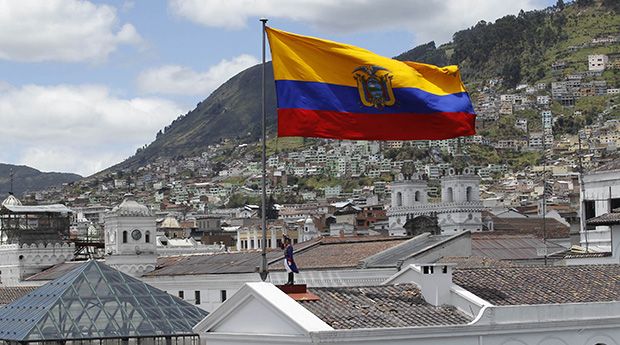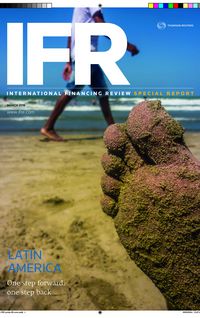Ecuador faces financing setbacks just two years after returning to the international bond markets.
Ecuador will struggle to cover growing financing gaps in 2016 as funding options narrow for the Latin American oil exporter in the face of political pressures and rock-bottom crude prices.
The Andean country instilled some market confidence in December after fully repaying the US$650m 2015s – the first time that the country had ever covered a maturing global bond.
But access to the international markets has effectively slammed shut this year as investors flee EM credits with high exposure to oil and the sovereign’s bond prices sink in the wake of the recent crude rout.
Ecuador last came to market in May 2015, when it tapped its 2020s for another US$750m at a final yield of 8.50%, marking a vast improvement on the 10.50% it achieved when it first sold the bonds at par in March 2015.
It is almost two years since the country returned international bond markets for the first time in nearly a decade in June 2014 to print a US$2bn 10-year issue.
Selective memory
At the time, investors largely shrugged memories of the government’s selective default just six years earlier and focused instead on Ecuador’s improving credit metrics and the relatively attractive pick-up offered over other sovereigns with similar Single B ratings.
As a result of the reception, the bond was priced at par to yield 7.95% – a level that some saw as excessively tight given the country’s reputation as a serial defaulter.
But now, it is the slump in oil prices that is taking its toll on risk perception toward a country where oil accounts for about 52% of its exports.
“Despite tapping the bond markets and receiving substantial bilateral and multi-lateral financing, Ecuador accumulated considerable arrears last year,” analysts at Bank of America Merrill Lynch wrote in a February report.
This comes as the country watches its current account deteriorate after enjoying a good 13 years of surpluses until the third quarter of 2014, when it disappeared into negative territory and stayed there.
Spreads on Ecuadoran sovereign debt narrowed along with the rest of the Latin American market in March, but remained 34bp wider on the year as of March 8, according to data provided by Bank of America Merrill Lynch.
Yields on individual bonds are also comfortably in the double digits, making funding costs in the public markets prohibitively expensive.
“With the country’s bonds now trading at an average yield of 16%, a new issuance seems unlikely,” analysts at the US bank wrote in late February.
By early March, the sovereign’s 2020s had gapped out to 18.60%–19%, while the 2024s were trading at around 13% as investors fretted about its ability to close its financing gap.
Ecuador could take out loans, though that would require significant guarantees to get bilateral lenders on board at a time of low oil prices, the Bank of America Merrill Lynch report stated.
The government could also possibly increase advance oil sales, draw down on public sector deposits or carry out further spending cuts. However, with a 2017 presidential election looming, such options are limited, the analysts said.
“[We] see it as more likely that the adjustment variables will be international reserves and accumulation of arrears,” they said. ”Further drops in reserves and increasing difficulties in making payments are likely to lead to a deteriorating perception about the quality of Ecuador’s credit.”
The government must close a consolidated public sector funding gap that reaches as high as US$3.1bn this year assuming oil prices remain at US$35 a barrel, the bank said.
And while that could drop to US$1.8bn – if, as the BAML analysts forecast, Ecuador’s oil basket price rebounds to US$41 this year – the Andean country is likely to have to dip into reserves to cover its needs.
“Given lower oil prices and much more limited market access, Ecuador will have to undertake large budget cuts or continue accumulating arrears in order to cover its financing needs,” the bank said.
To see the digital version of this special report, please click here
To purchase printed copies or a PDF of this report, please email gloria.balbastro@thomsonreuters.com



